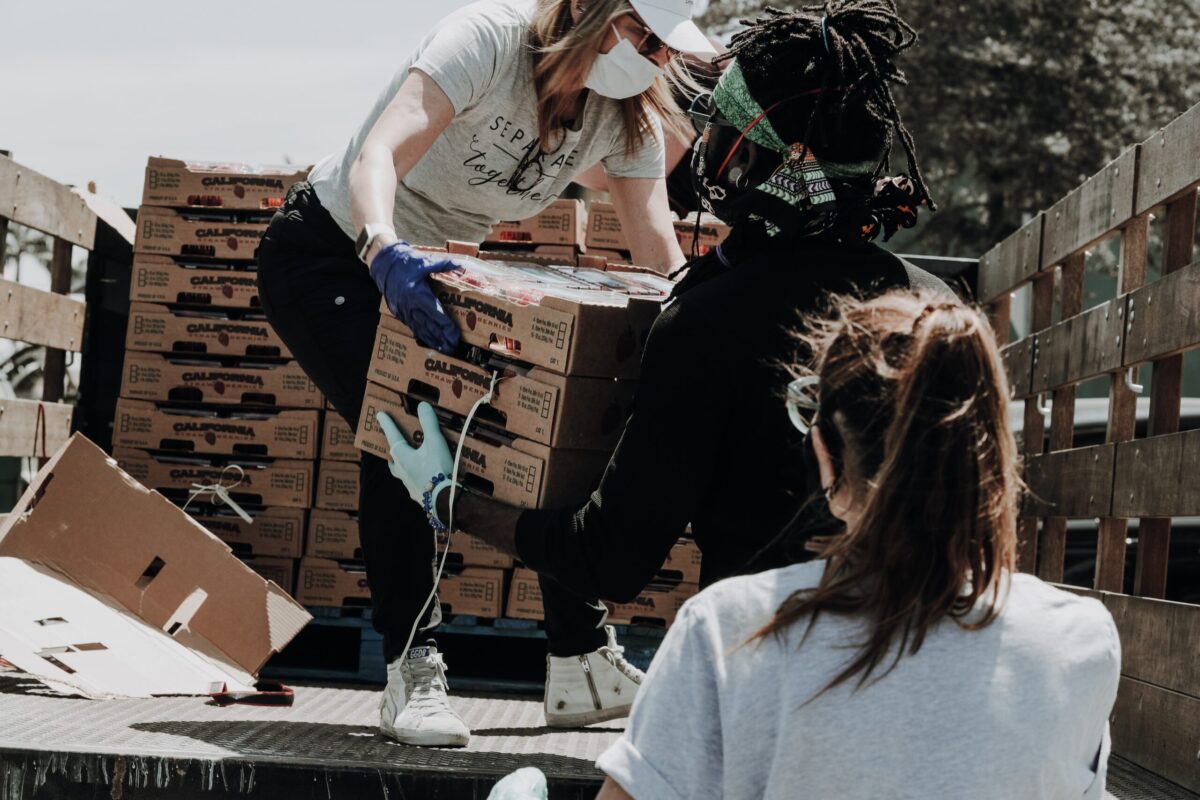Skift Take
President Joe Biden recently signed the Food Donation Improvement Act into law. This legislation makes donating food easier than ever, welcome news for the meetings industry.
President Joe Biden recently signed the Food Donation Improvement Act (FDIA) into law, legislation making donating food easier than ever. This bill builds on the Bill Emerson Good Samaritan Food Donation Act, commonly known as the Good Samaritan Act, which encourages companies to donate surplus food to nonprofits by providing civil and criminal liability protection for food donors and nonprofit intermediaries.
According to the U.S. Department of Agriculture (USDA), approximately 40 percent of food produced, which equates to 63 million tons, is thrown out. Yet, roughly 34 million people in the U.S. live in food-insecure households.
“The passing of the Food Donation Impact Act means we have even more reason to donate the excess food from our events that have been prepared but not served. It means that the excess food we have can and should go to feed people in our communities instead of going to landfills that add to global warming,” said Tracy Stuckrath, food and allergy expert and founder of Thrive! meetings & events.
The FDIA is enhancing the Emerson Act by extending its liability protection. This benefits supplier member of the events industry — hotels, convention and conference centers, and caterers that are already required to comply with food safety requirements — by offering extended protection of specific donations given directly to those in need versus just to a nonprofit organization. The FDIA also extends liability protection to donations provided to recipients at a good Samaritan reduced price.
The new food donation act may also positively influence the public perception of business events. “It’s a huge opportunity to show the general public what and how business events can support the communities in which they are meeting. The economic impact business meetings bring to local communities is huge. Adding another level of contribution to the impact can elevate the value even more,” adds Stuckrath.
Food Donation Should Still Be the Last Resort
Ordering the right amount of food for events needs to be improved. “Planners need to track what their attendees like and dislike by working with their culinary partners to evaluate what is eaten on buffets, passed hors d’oeuvres, and even plated meals,” said Stuckrath. “Culinary partners need to educate their sales teams, front and back of the house, on how to sell and serve the right amount of food and give input on what they see does and does not get eaten. We need to be okay with a chafing dish being emptied before it is replaced.”
The FDIA is also an opportunity to help organizations reach their ESG (environmental, social, and governance) goals. “Whether planners bring a partner to the table to recover the food on their behalf or ensure that the venues and culinary partners they contract have this in place, are both great options. I do think it must be a requirement on RFPs and with contracting. It needs to be written in all contracts, and the plans must be worked on from the beginning of the planning process,” said Stuckrath.
She recommends that planners partner with a third party like Food Rescue U.S., Eat Greater Des Moines, Goodr, or Rock & Wrap It Up! Food rescue organizations will help alleviate some of the tasks associated with food recovery.
This new law has the potential for a significant shift in food donation practices on the venue side. “Suppliers must be educated on how to do it, who to partner with, and the costs. Where I’ve seen the biggest challenge on donations is with franchise locations owned and managed by companies other than the big brand names. Food recovery is not free. It takes money to pay for the car fuel, the staff, the warehouses, and the equipment. Who is going to foot that bill? The planner, caterer, or nonprofit? They also need to understand —they’re lawyers and insurance companies — they are protected by the law. The excuse that they will get sued is not an option anymore,” she said.
Food Donation Is an Opportunity to Decrease the Carbon Footprint
Jiwon McCartney, the founder of Fight2Feed, a charitable organization focused on ending hunger and reducing food waste, said the FDIA means planners can decrease the carbon footprint, minimize food waste, and feed communities in need.
“Food waste and hunger have been a long-time issue in our country. The meeting industry has been a large contributor to food waste for many years and many reasons,” said McCartney. “I have always felt the meeting industry should be more engaged with the community, and this is one way we can make a great impact.”
McCartney sees both sides benefiting. “I imagine this being a great opportunity for hotels, convention centers, caterers, and restaurants to be more engaged with their community and create CSR opportunities,” said McCartney. “There will be a need for third parties to manage this process. It is recommended to partner with local organizations that already have an operating system in place. For example, Fight2Feed, 100 percent volunteer-run, managed, and operated, has such a system up and running. Over 3 million pounds of food in the Chicago area was rescued during the pandemic.”





